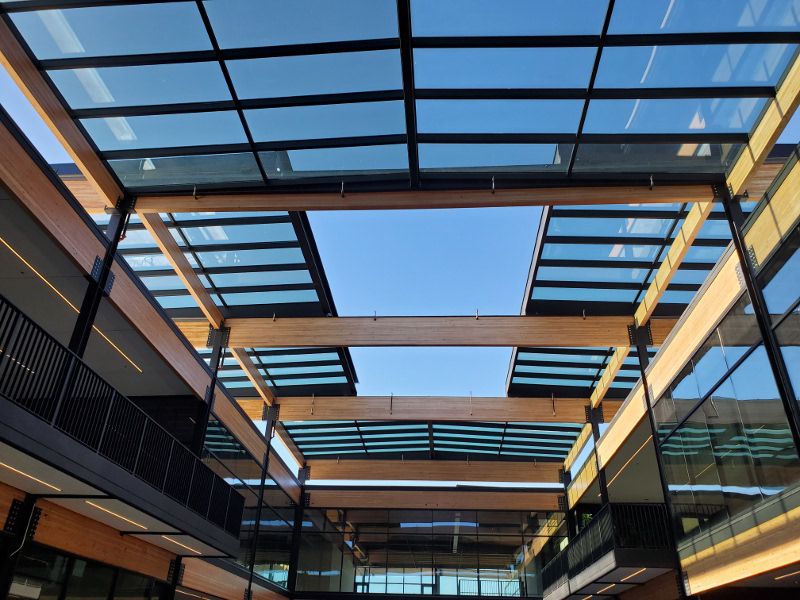A skylight roofs is a beautiful and functional feature that can add value to both residential and commercial buildings. This unique type of roof is designed to bring natural light and fresh air into a building, creating a more inviting and comfortable space for residents and employees. Including a skylight roof can also save on energy costs and make a building more environmentally friendly. In this blog, we explore five facts about skylight roofs that you may not know. So, whether you’re a building owner, architect, or just curious about skylight roofs, keep reading to learn more about this versatile and valuable feature.
5 Must-Know Facts about Skylight Roofs
Here are five facts about skylight roofs that you may not know:
1) They are very different from skylights
A skylight roof is actually more roof than skylight. While most people recognize that a traditional skylight is like a window in the roof, they are less familiar with a skylight roof. Let’s take the metaphor of the window a little further.
A skylight is a transparent insert with a larger roof, just like a window is a transparent insert within a larger wall.
A skylight roof, on the other hand, is a structural roof that happens to be sheathed in glass, just like a structural glass wall is a wall that happens to be covered in glass.
The fact that our skylight roofs are also retractable means that they can be opened and closed as needed, allowing natural light and fresh air inside.
2) Ironically, they don’t even have to be transparent
While skylights are made of glass or other transparent or semi-transparent material, a retractable roof can be completely opaque. For example, many of our observatory customers prefer their roof to be sheathed in traditional roofing materials, such as metal, wood, shingles, etc. Light and air are only let in when the roof is retracted.
3) They are used to achieve a variety of goals
Skylight roofs can serve several purposes. Here are just a few examples:
- Health: A retractable skylight roof allows fresh air into indoor spaces, improving air circulation.
- Function: As mentioned above, a retractable roof can provide telescopes with unobstructed views of the sky. A low-profile retractable roof access unit, meanwhile, enables access to rooftop spaces without violating building height regulation.
- Extend the Season: Pools and restaurants with retractable skylight roofs can transform the functionality of seasonal outdoor space into year-round use.
4) They can be retro-fitted to existing structures
Skylight roofs can be designed into a building from the beginning, or they can be retrofitted to a structure later. This means that even older buildings can benefit from the natural light and fresh air that a skylight roof can provide.
5) They help you save on energy costs
By acting as a greenhouse in winter and allowing warm air to escape in summer, retractable roofs can help maintain comfortable interior temperatures naturally. Additionally, skylight roofs can reduce the need for artificial lighting by welcoming natural light all day long.
Conclusion
In conclusion, skylight roofs are versatile and valuable features that can be used in both residential and commercial buildings. They can provide natural light, fresh air, and a beautiful view, as well as functional ways to access a rooftop deck or protect observatory equipment. A skylight roof can be designed into a building from the beginning or added later as a retrofit, and can save on utility costs by facilitating natural heating and cooling.
If you’re thinking of adding a skylight roof to your building, be sure to consult with an expert to find the best solution for your needs.
Rollamatic Has You Covered
If you’re interested in learning more about the different options available for retractable skylight roofs, please reach out to us by phone or online. At Rollamatic, we have the expertise and experience to design, engineer, construct, install and maintain the ideal retractable roof system for your site. Contact us today, and we’ll work with you to make it happen.

